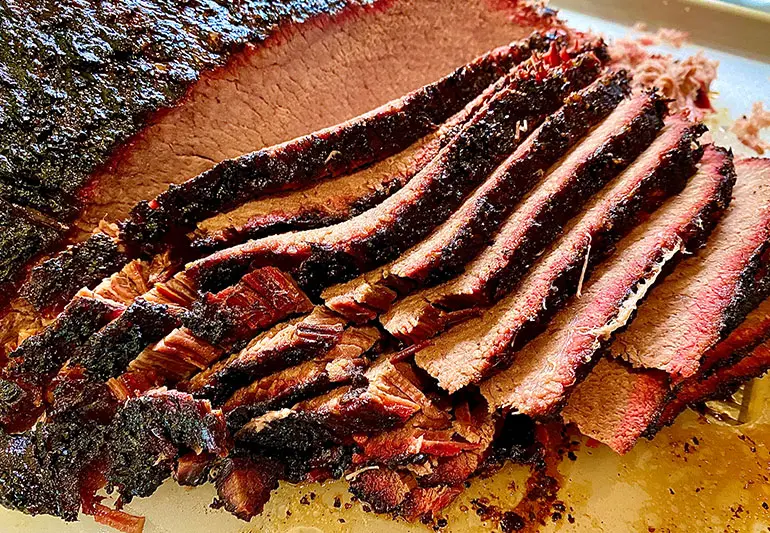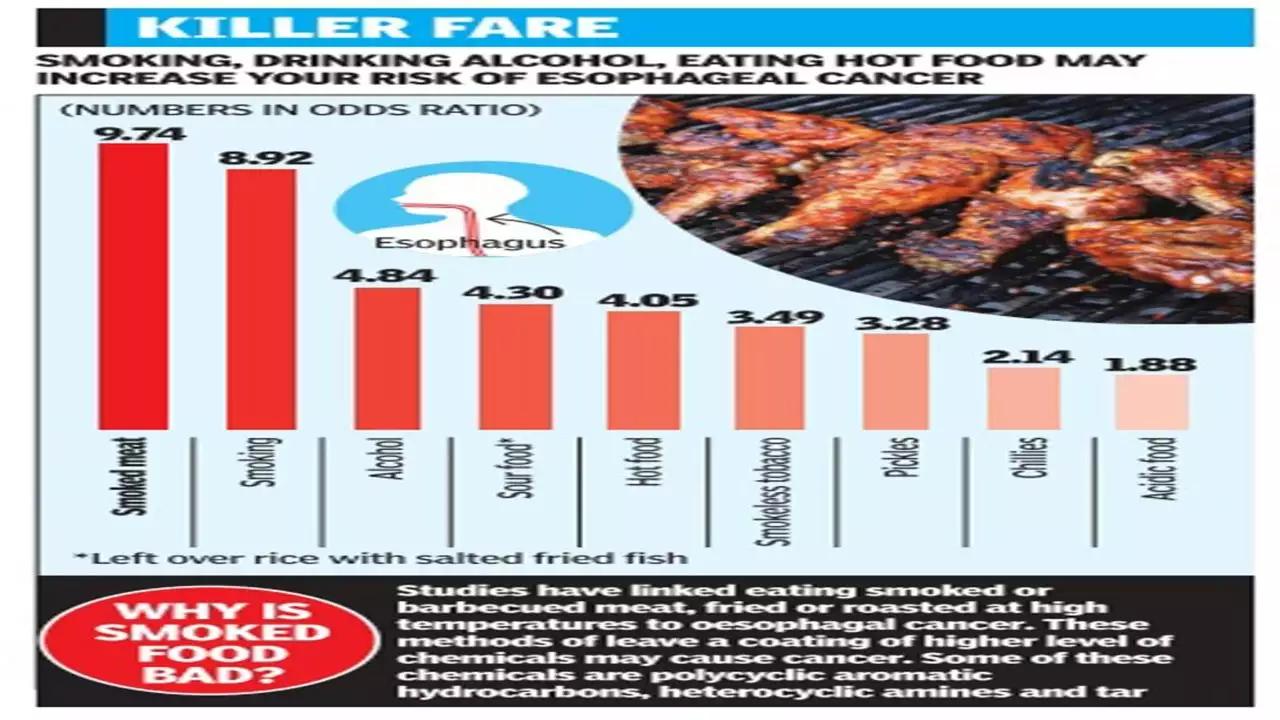Smoking of foods has been implicated in the formation of cancer due to the presence of carcinogenic components in wood smoke and smoked meats. These components include polycyclic aromatic hydrocarbons (PAH), N-nitroso compounds, and possibly heterocyclic aromatic amines. Additionally, the toxic effects of pathogenic microflora that are not eliminated during the manufacturing process can also contribute to the health hazards associated with smoked foods (Andrée et al., 2010).
Polycyclic Aromatic Hydrocarbons (PAH)
Wood smoke contains various PAH, some of which have been identified as carcinogenic. However, not all PAH are considered carcinogenic, as the low-molecular-weight members of this group are not regarded as such. The most mutagenic and carcinogenic PAH is benzo(a)pyrene (BaP), which was previously recognized as an indicator of carcinogenic PAH in wood smoke and smoked products. However, it was later discovered that BaP alone is not suitable as the sole marker for PAH content in foods, as there are numerous other PAH present. Therefore, the sum of the concentration of BaP, benz(a)anthracene, benzo(b)fluoranthene, and chrysene (PAH4) or PAH8, which includes additional PAH, is a better indicator (Bartoszek, 2007).
The European Food Safety Authority has set maximum concentration limits for BaP and PAH4 in smoked meat and meat products. Until August 31, 2014, the maximum concentration for BaP is 5 ng g−1, and after this date, it is reduced to 2 ng g−Additionally, the upper limit for PAH4 is set at 30 ng g−1 until August 31, 2014, and 12 ng g−1 after this date. However, some Member States are allowed to have higher levels of PAHs in their smoked meat products if they comply with the maximum levels set before September 1, 2014 (Commission regulation (EU) 2020/1255 of September 7, 2020).
The content of PAH in the final smoked product depends on various factors, including the condition of the raw material, fat content, type of sausages, spices and additives used, casing properties, heat treatment parameters, smoking temperature, and drying degree. The total mass of PAH compounds with a molecular weight lower than 216 may be significantly higher than that of BaP in smoked meat products. Heavy PAH compounds can also be present at higher concentrations (Potthast, 1979).

N-Nitroso Compounds
Smoked, cured meat products contain both volatile and nonvolatile N-nitroso compounds, most of which are known to be carcinogenic in laboratory animals. The aldehydes present in smoke can react with cysteamine and cysteine, leading to the formation of thiazolidine precursors that can be easily nitrosated. Formaldehyde, glycolaldehyde, and other compounds present in smoke can contribute to the formation of N-nitrosothiazolidine and N-nitrosothiazolidine-4-carboxylic acid (HMNTCA). The concentration of these compounds can vary depending on the smoking method used, with traditional ovens yielding higher concentrations compared to modern smokehouses (Sikorski and Staroszczyk, 2017).
Heterocyclic Aromatic Amines
Heterocyclic aromatic amines are known to be generated in pyrolytic reactions of amino acids and proteins, as well as in nonenzymatic browning. These compounds are present in very heavily smoked foods but at amounts lower than 1 ng g−The impact of heterocyclic aromatic amines on cancer formation in relation to smoked foods is not yet fully understood (Sikorski and Staroszczyk, 2017).
Other Hazards
Phenols, cresols, and furfurol are present in smoke and have certain toxic properties, although they are not considered carcinogenic. Benzene, a known cause of blood cancer, is present in smoke in small amounts. Formaldehyde, which is probably carcinogenic and allergenic, is present at higher levels. The acids, especially formic and acetic, can irritate the respiratory tract and enhance the toxic effects of other substances.
The hazards associated with pathogenic microflora in smoked foods depend on the initial bacterial contamination, the effectiveness of processing steps in eliminating bacteria, and the implementation of quality assurance systems such as hazard analysis and critical control points (Andrée et al., 2010).
- Q: Are all smoked foods carcinogenic?
- A: Not all smoked foods are carcinogenic. The health hazards associated with smoked foods depend on the presence of carcinogenic components such as PAH, N-nitroso compounds, and heterocyclic aromatic amines, as well as the effectiveness of pathogenic microflora elimination during the manufacturing process.
- Q: Can the concentration of carcinogens in smoked foods be controlled?
- A: Yes, there are regulations in place to control the concentration of carcinogens in smoked meat and meat products. Maximum concentration limits for specific compounds such as BaP and PAH4 have been set by regulatory authorities.
- Q: Are there safer alternatives to smoking foods?
- A: Yes, there are alternative methods of cooking and flavoring foods that do not involve smoking, such as grilling, baking, or using marinades and spices.
The smoking of foods has been linked to the formation of cancer due to the presence of carcinogenic components such as PAH, N-nitroso compounds, and potentially heterocyclic aromatic amines. These compounds can be found in wood smoke and smoked meats. The concentration of these carcinogens can be controlled through regulations to ensure the safety of smoked meat and meat products. It is important to consider alternative methods of cooking and flavoring foods to reduce the potential health risks associated with smoked foods.
If you want to know other articles similar to Smoked foods and cancer: carcinogenic components in wood smoke and smoked meats you can visit the Smoking category.


Related Articles